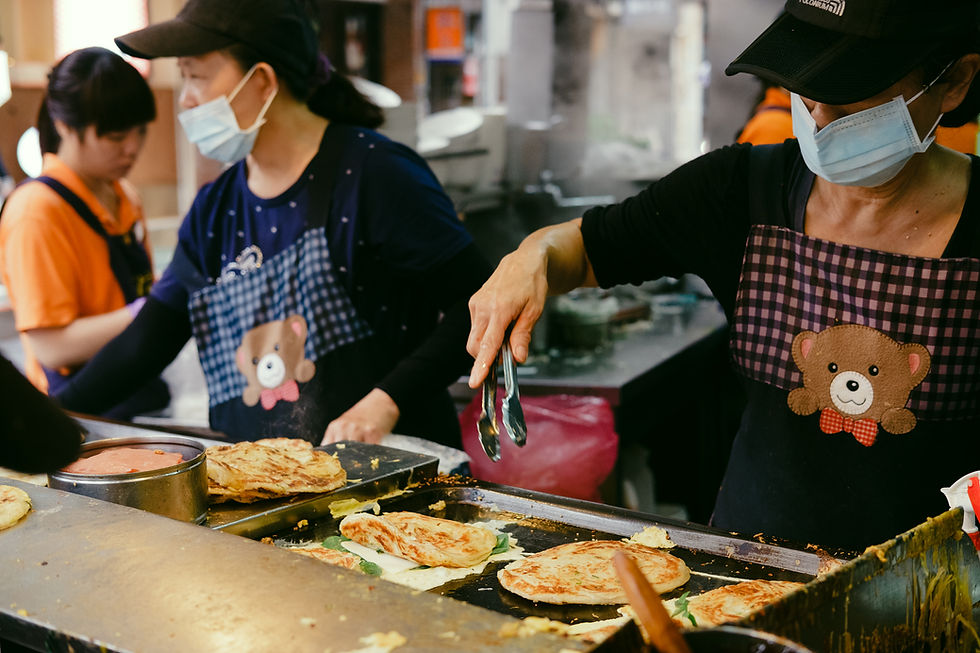There is nothing more delicious than dumplings!丨Eating in Taiwan
- Like It Formosa

- Dec 1, 2018
- 3 min read
Labeled with different names such as Gyoza, Jiaozi, Samosa, Wonton, or Mandu in common Asian culture, Taiwanese Dumpling is also one of the local signature dish that shows our uniqueness as well as connection with neighboring communities.

The dumplings now commonly seen in Taiwan were in fact not a regular type of food until recently. Before 1945, the most common local cuisine in Taiwan had derived from Southeastern China, with some touch of Japanese influence. After 1949 however, immigrants that relocated with ROC government to Taiwan brought their own regional cuisine from China - namely formerly lesser-seen dough-based cuisine from northern provinces. After decades of reinvention and reproduction, it became the Taiwanese Dumpling culture we know of today. In Taiwan, you might have the chance to taste a variety of “dumplings” such as Wonton, Shuijiao, Zhengjiao, potstickers or even atypical ones like Tangyuan, Zongzi, Xiaolongbao - keep in mind that they are all very different types of food, but unfortunately there is not enough English vocabulary to grasp them all!
While all called dumplings, they are prepared in different ways. Shuijiao (lit. Water Dumplings), for instance, is commonly cooked as a regular meal at home. All you need to do is to throw the frozen dumplings into boiling water, and the dish will be ready in less than 10 minutes. Zhengjiao (lit. Steamed Dumplings), on the other hand, is perceived to be a bit fancier as it is often served in steamy bamboo containers, a common strait of Dim Sum cuisine. At last, foreigners might be most familiar with Jienjiao (lit: Fried Dumplings) as they look quite similar to Japanese Gyoza and Korean Mandu, although each with their own unique taste.

Many argue that Taiwanese dumplings should be categorized under other more famed cuisine such as Shanghai soup dumplings, Shandong dumplings, Wenzhou Wonton or even Japanese Gyoza. However, one should also see Taiwanese dumplings as a representation of our mix-bred way of living and eating. That is to say, the dish has been inherited by immigrants, reinvented and redeveloped to adapt to local taste, and now finally integrated into our much-celebrated food culture - there is nothing more Taiwanese than that!
(Some might even doubt if it is authentic to its origin at all.)
At last, Dumplings is not only a treasured dish of Taiwanese cuisine, but it also shows the cultural interaction we have had with our surrounding countries that is much intertwined with the development of history. The beauty of Taiwanese food is that you will be able to taste its ancestry - from China, from Japan or from other places - with our dumplings as a classic example.

Enjoy the dishes and keep in mind of a Chinese proverb: “There is nothing more delicious than dumplings”!
Taipei Food Tour丨Taste All Kinds of Taiwanese Signature Dish in One Single Tour
Traveling in Taiwan? Why not have a lunch with us!
Through our Food Tour, Like It Formosa takes you to the much celebrated Yongkang Street at Dongmen Station of Taipei, where guests will be shown a glimpse of the Taiwanese gourmet culture that locals take pride in. You are advised to come with an empty stomach, as it will be an afternoon that not only opens your eyes but also challenges your appetite!
For the second stop of the Food Tour, Like It Formosa takes you to the famed Dongmen Dumpling House for a delicious introduction to local dumpling culture! At Dongmen Dumpling House, guests will be welcomed with some of the most well-known types of dumplings in Taiwan: Shuijiao, Zhengjiao and Jienjiao (Pot-sticker).
READ MORE: Taipei Food Tour
































Comments